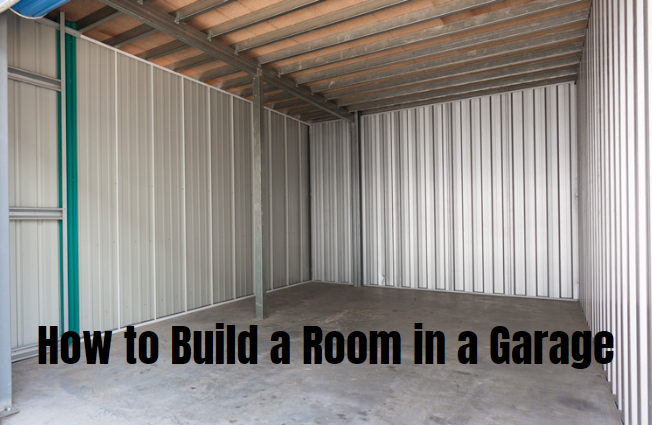So, you’ve got a garage that’s currently doing its best impression of a storage-unit-meets-junk-drawer? Trust us, we’ve seen it all—bikes buried under holiday decor, half-empty paint cans from 2003, and maybe even a treadmill that’s become a glorified coat rack. But what if we told you that space could become a killer guest room, home gym, or even a cozy home office? Yep, garage conversions are that magical. And hey, if you’re in Los Angeles (or nearby areas like Santa Clarita or Mission Hills), our team at America Green Builders lives for turning “meh” spaces into “whoa” spaces. Let’s break it down.
Step 1: Dream Big, But Plan Smarter
First things first: what’s your vision? A man cave with a mini-fridge? A yoga studio that doesn’t smell like motor oil? Or maybe a legit room addition for your in-laws (bless you). Whatever it is, sketch it out—literally. Grab a notebook or use an app, and think about:
- Layout: Where will doors, windows, and outlets go?
- Insulation: Spoiler: Garages aren’t exactly known for their cozy temps.
- Permits: Ugh, paperwork. But skipping this step could mean fines or worse.
Pro tip: If you’re sweating the details, a garage conversion contractor (like, ahem, us at America Green Builders) can handle the heavy lifting. We’ve got the permits, the plans, and the patience to deal with city inspectors—so you don’t have to.
Step 2: The “Do I DIY or Call a Pro?” Dilemma
Look, we get it. YouTube tutorials make everything look easy. But let’s be real: unless you’ve got experience wiring outlets or framing walls, this isn’t the time to channel your inner Bob Vila. Here’s where a general contractor or outdoor living contractor (depending on your project’s vibe) saves the day.
Why hire a pro?
- Cost efficiency: Mistakes are expensive. Fixing a botched electrical job? No thanks.
- Time saved: We’ll finish in weeks, not months (or years, if we’re being dramatic).
- Peace of mind: Sleep easy knowing your new room won’t collapse during movie night.
And hey, if you’re searching for “home contractors near me” in Los Angeles, we’re right here—with rave reviews to back it up. Just saying.
Step 3: Budgeting Without the Tears
Let’s talk price, because nobody likes sticker shock. Garage conversions can range from “budget-friendly refresh” to “full-blown spa retreat,” so here’s a rough breakdown:
| Expense | Average Cost | What’s Included |
|---|---|---|
| Basic Conversion | $10k–$20k | Insulation, drywall, flooring, lighting |
| Mid-Range Upgrade | $20k–$40k | HVAC, custom storage, built-ins |
| Luxury Transformation | $40k+ | Bathroom remodel, kitchenette, high-end finishes |
FYI: Adding a bathroom remodel or kitchen remodel will bump up the cost, but it’s worth it for resale value (or midnight snack access).
Step 4: Avoid These “Oops” Moments
We’ve seen it all—here’s how to dodge common pitfalls:
- Skipping insulation: Your garage isn’t the Arctic, but it’s close. Invest in proper insulation.
- Ignoring ventilation: Unless you want your yoga studio to double as a sauna.
- Cheaping out on flooring: Concrete’s cool… until you’re standing on it for more than five minutes.
PS: If you’re in Santa Clarita or Mission Hills, our construction company can spot these issues before they become disasters.
Step 5: Make It Yours
Now for the fun part: design! Here’s where you can flex your creativity:
- Lighting: String lights? Recessed LEDs? Go nuts.
- Storage: Built-in shelves hide clutter and look chic.
- Flooring: Waterproof laminate for gyms, plush carpet for lounging.
And if you’re stuck, our home improvement services team loves brainstorming ideas—like adding a skylight or a fold-down desk.
FAQ: Your Burning Questions, Answered
1. “Do I really need a permit?”
Yes. Unless you enjoy living on the edge (and potentially redoing everything). Permits ensure your room is safe and legal.
2. “How long does a garage conversion take?”
Typically 4–8 weeks. Delays happen (thanks, weather!), but a good building contractor keeps things moving.
3. “Will this raise my property taxes?”
Maybe a smidge—but it’ll boost your home’s value way more. Cha-ching!
Why Choose America Green Builders?
We’re not just another Los Angeles construction company. We’re your neighbors, your problem-solvers, and the folks who’ll text you updates (no spam, promise). Whether you’re in Santa Clarita, Mission Hills, or anywhere in between, we’ve got:
- Transparent pricing: No hidden fees, just clear quotes.
- 5-star reviews: Check them out—we’re kinda proud.
- Free consultations: Coffee’s on us while we brainstorm your dream space.
Ready to Ditch the Junk and Embrace the Awesome?
Garage conversions aren’t just about adding square footage—they’re about creating a space that works for you. And if DIY isn’t your thing (no shame!), America Green Builders is here to help. Drop us a line, and let’s turn that cluttered garage into your favorite room.
P.S. If you’re still using your garage to store that “I’ll fix it someday” lawnmower… c’mon. You deserve better.





